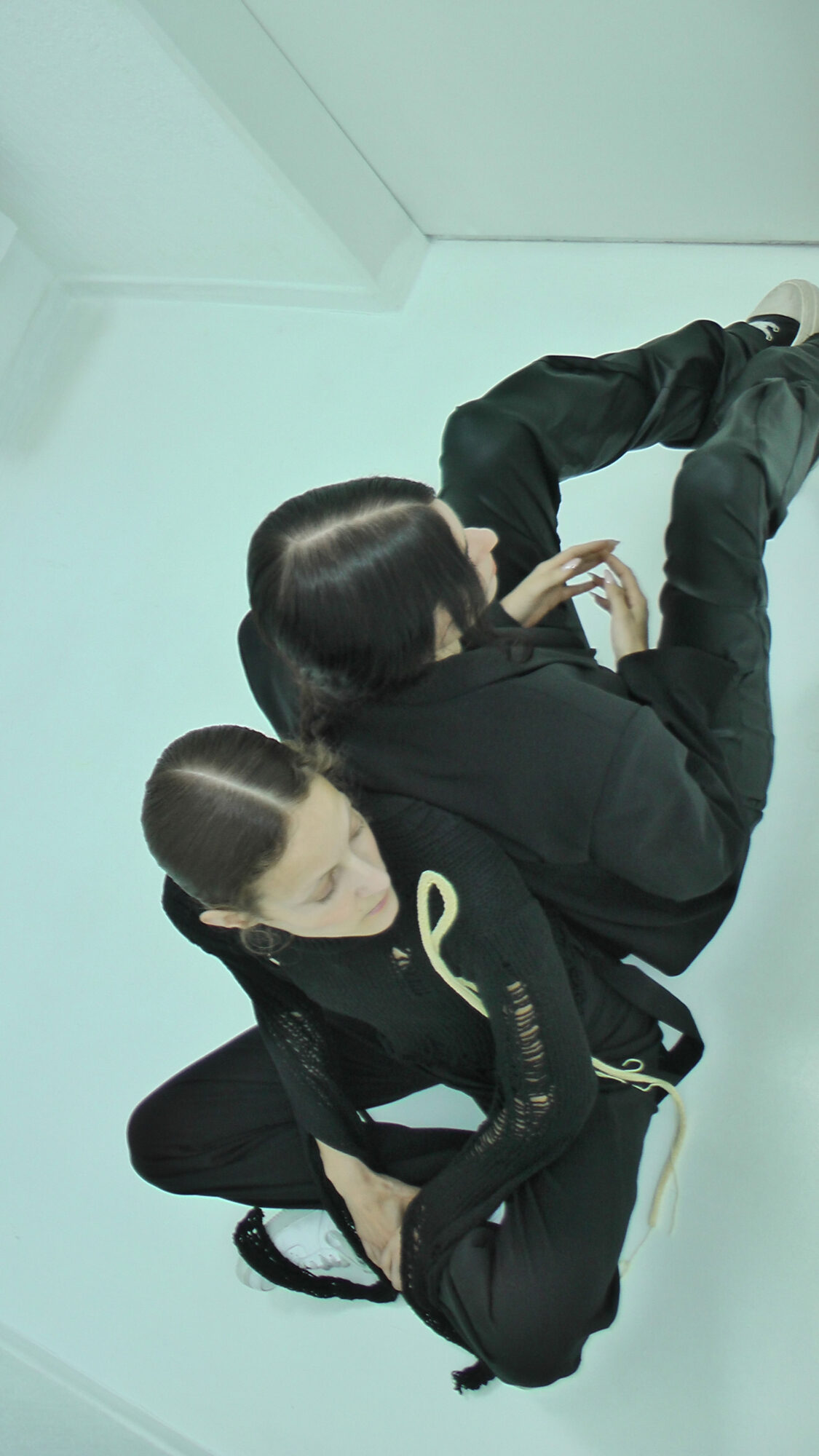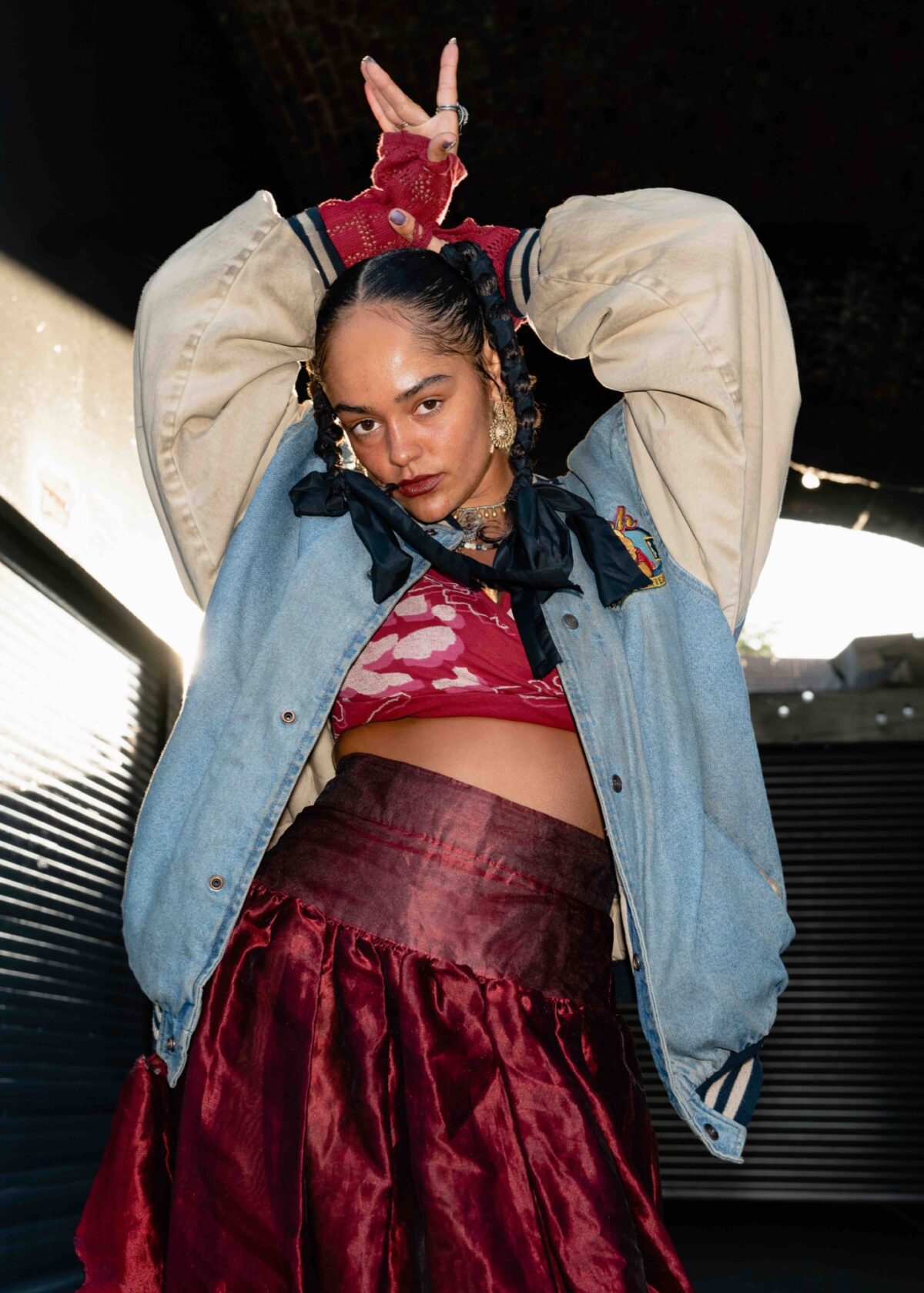Ottolinger

The brainchild of Swiss designers Christa Bösch and Cosima Gadient, the Berlin-based label pushes a collaborative and deconstructive approach to design.
Meeting while students at fashion school in Basel, Christa Bösch and Cosima Gadient have built one of the most exciting, experimental labels to emerge in recent years. They seemed to arrive with a very clear aesthetic, nascent but driven, sure of the direction: avant-garde, rooted in the processes of deconstruction, ripping and shredding and burning, but always in the service of the garment, and not just deconstruction for its own sake, subverting the primness of luxury fashion and simplicity of utilitarianism, and all ultimately stemming from needs and desires of themselves.
Since launching their label in 2015, and relocating from Basel to Berlin, the pair have carved out this niche for their own: their talents have seen them stage shows in London, Paris and New York, collaborate with a succession of artists too, aware of the fact that fashion is more than simply clothing, but an artform in the world.

Felix Petty
How are you guys today?
Christa Bösch
Good. It's very nice in Berlin. Spring time.
Cosima Gadient
Summer actually. We're skipping springs in Berlin. We do winter and then we do summer.
FP
I really liked the images shot for this story by Hendrik. Do you enjoy having your photograph taken?
CG
We are not professional models, so it's always hard for us to look at ourselves. But they were super cute.
FP
You met while you were students in Basel and started working together after you graduated. Did it happen quite naturally that you started collaborating?
CB
We always liked each other’s work when we were studying. We became friends and talked a lot about what we wanted to do after graduating, what we liked in fashion, what we thought was missing from the industry. After we graduated we ended up working for other brands and other people…
CG
We're both super proactive people. After a while we were just like, fuck that. Let’s start our own thing. We had so many ideas. We didn’t know what we were getting into.
CB
I was living in Antwerp and interning. I did an interview for a job and they said that if I got this job I would be allowed to use the copy machine next to the head designer. And they said that this was a very big deal. And I was like, okay. This feels wrong. Cosima called me like ten minutes after and said, "Let's start a brand." And I was like, "Yeah, let's start a brand."
FP
Beyond this rebellion against the ego and power structures of the fashion industry, creatively what were you interested in together?
CB
It began by wanting to simply create something cool for strong women.
CG
And also we wanted to do something really hands-on, to take a garment, take it apart and really create this new shape with this really raw aesthetic.
CB
We grew up in Switzerland, definitely not surrounded by the fashion environment. So we started a brand together but we didn't know what that meant.
CG
We only really worked it out when we started, when we went to Paris. We're quick learners, we were like: “Okay, we are adapting to this. We really like this, we want to progress in this.”
FP
That naivety can be a strength as well, right? A kind of creative force.
CB
If you know what you are getting into you wouldn’t dare to start. It’s so expensive and we made so many mistakes. We didn’t know what we were doing.
FP
But mistakes can be useful. A mistake reveals a different future. It leads you in a different direction. If you just know exactly what you are doing all the time, you would never end up anywhere interesting.
CG
Exactly. Yeah.
CB
And also you have to make the mistake yourself to really learn from it.

“We wanted to do something really hands-on, to take a garment, take it apart make something new.”
FP
What was it like studying in Basel? Because it's not a big fashion capital, or even a small fashion capital. But this kind of outsiderness of it as a city I find quite interesting.
CB
For me it was very good. I grew up in the mountains and then I studied law and my family was in farming. A very different life. Basel gave me freedom to adapt, to find out more about fashion and art, it gave me time to develop and learn. I think anywhere else I would’ve been too ashamed about not knowing everything, or too shy. It was perfect in this sense.
CG
It was a really untoxic environment to learn in, there was no pressure. It was very peaceful, so we had this freedom to do whatever we want, work on our own projects, explore all these horizons.
CB
The school was right on the river, so you could swim during your lunch break. It was actually very idyllic.
CG
It was like a retreat. Basel isn’t a big place, and it doesn’t have a fashion scene but it does have very strong art world connections. I think that influenced us, we’re always collaborating with artists, and that world is something we’re very close to. During Art Basel it becomes a very international city.
FP
I get that in your work. The feeling that fashion isn’t just this discipline by itself. It interacts with the world, with art, with music, and they aren’t separate anymore. Musicians want to be fashion designers, fashion designers want to work with artists. Artists want to do everything, it's not really just one simple distinction anymore.
CB
It's true.
CG
A collection, well we think of it as a collection of things, of all these different aspects.
FP
Did coming from Basel influence your decision to move to Berlin instead of Paris or London? Was this a creative or practical move?
CG
I think it was more of a practical decision.
CB
A financial decision.
CG
We considered London and it would’ve killed us financially in a year.
CB
It would’ve been impossible. Berlin doesn’t have the same pressure. But it does have a feeling to it, a creativity, it’s not too far away, everyone comes through. We had many friends here already, too.

FP
And how does the actual work between you happen? Is it very collaborative, very individual? Do you work easily together? Do you fall out?
CG
We do everything together. In front of the computer I type “a” then she types “b”.
CB
Of course we fight sometimes, because imagine if we didn’t, that would just mean one person isn’t saying what she wants. Communication is always the key. It's like being in a relationship. You have to work on it.
CG
Communication and respect.
CB
Yeah. I think a lot is respect.
CG
But we do separate things because it's just easier and we can both do what we are better at. It makes you stronger and it’s good to have a second point of view. A great thing about working with someone is that it’s really nice that someone has your back when times are tough.
CB
You are never alone. If you don't know what you should do or what is better, you can always ask the other person for some honest feedback.
FP
And then building a business as well, how is this process of going from a creative idea and an ideal of working together into the actual thing of making money, running a label, working with all of the industry side of fashion?
CG
The reality is really harsh and it comes really quick. I mean, if you don't sell, then you're not succeeding.
CB
We have no business training. I was never very money focussed growing up. So we’re learning. I’m trying to train my business brain.
FP
Because quite early on you were critically successful and people were aware of the brand. But going from being a critically interesting brand to an actual business is quite a jump.
CB
I think we are still learning.
CG
We are always reflecting, always analyzing, almost on a daily basis. We’re doing it ourselves. So, we are really cautious of the current state of the world, and what is going on. We try to make smart decisions. It’s one thing to have an aesthetic idea, a unique creative proposition, but then, what do you want to do with it? What do you want? We have to ask ourselves what we want in five years, what we want in ten years.
CB
And also, my boyfriend is in business. And I often ask how to solve something or what to do, but he always says no one really has the correct answer. Things are always changing. You are never really in charge because you never know what the market is doing. We always plan for a best case and the worst case scenario.
FP
What is the ten year plan? Not just as a business but also creatively?
CB
There’s a tension between being known for your aesthetic and then really selling it. You have to sell the idea but you also have to sell the garments. You have to make decisions about making more commercial pieces, about making things in certain ways. And you have to make decisions about how big you actually want to grow, and how big you want to be, and how and why you might expand. We ask ourselves these questions all the time.
CB
I think creatively what we really want is to keep pushing boundaries and always surprise people, keep people active and thinking and also have a positive input to society and the creative world. It's not the goal to do basic denim pants. Of course it's okay to make basic denim pants. We all like them. But that's not the goal.
FP
To talk about Manifesto, and your collaboration with Anne De Vries. You’ve really done lots of work with artists, with various collaborators. What do you look for in a collaborator? What makes a good collaboration?
CG
It’s really about pushing boundaries, raising question, creating something new, and I think you can create something new through unexpected combinations. Working with Anne de Vries for Manifesto, we never worked with him before this, so it starts with a deconstructive jump. But it’s also a project in how you fit the elements together, the room, the clothes, the body, the installation. It’s always interesting to bring other people into that discussion.
CB
We’re having a lot of very technical discussions about how to make things work.
CG
We’re always trying to figure out how to make magic.
FP
And that's part of the excitement of working with other people.
Interview: Felix Petty
Photography: Hendrik Schneider

























































































